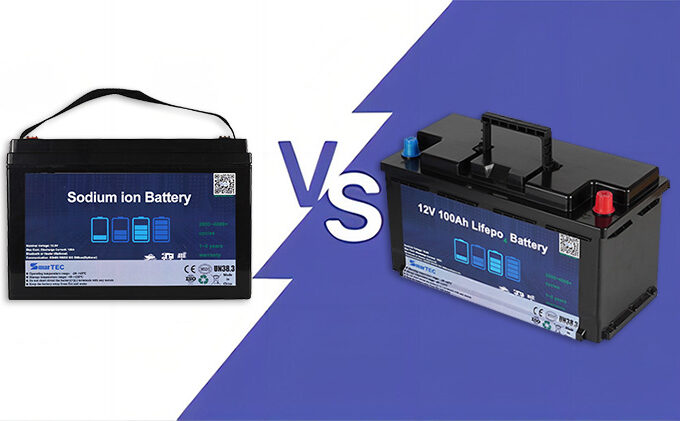Batteries are the powerhouses behind countless devices, converting chemical energy into electrical energy. Lithium-ion (Li-ion) batteries have long dominated the scene, celebrated for their high energy density, long life, and reliable safety.
Enter sodium-ion (Na-ion) batteries, a promising alternative that uses sodium ions (tiny particles with a positive charge) as charge carriers instead of lithium ions to store and release energy. Sodium-ion batteries are commonly used in cell phones and electric cars.
Let’s explore the differences between Sodium Ion and Lithium Ion batteries by looking at the materials used, their performance, and applications.
Materials Matter
1) Electrodes:
– Sodium-ion batteries: Use carbon materials such as hard carbon or graphene for the negative electrode (anode) and various options such as sodium layered oxides for the positive electrode (cathode).
– Lithium-ion batteries: Rely on graphite for the anode and a range of cathode materials such as lithium cobalt oxide or lithium iron phosphate.
2) Electrolyte:
– Both batteries require an electrolyte, usually a liquid or solid that contains ions for electrical conduction. Sodium-ion batteries may use sodium salts, while lithium-ion batteries may use lithium salts.
Performance Parameters
1) Energy density:
– Sodium-ion batteries: Generally have lower energy density due to larger sodium ions, resulting in larger size and lower capacity.
– Lithium-ion batteries: Have higher energy density, making them ideal for lightweight and long-lasting applications such as electric vehicles.
2) Power Density:
-Sodium-ion batteries: Demonstrate comparable or higher power density due to the high ionic conductivity and low polarization of sodium ions.
-Lithium-ion batteries: Equally competitive in power density, critical for applications requiring rapid charge and discharge.
3) Cycle life:
– Sodium-ion batteries: Tend to have lower cycle life due to electrode material instability.
– Lithium-ion batteries: Exhibit longer cycle life by withstanding more charge and discharge cycles.
4) Safety:
– Sodium-ion batteries: Exhibit better safety performance with a lower operating voltage and the absence of materials such as cobalt, which is flammable in lithium-ion batteries.
– Lithium-ion batteries: Can raise safety concerns in extreme conditions.
Applications
-Sodium-ion batteries: Suitable for large-scale, low-cost energy storage systems and low-power mobile devices, taking advantage of abundant and affordable raw materials, such as: wind power generation, solar power generation, smart grids, laptops, cell phones and tablets
-Lithium-ion batteries: Shine in high-performance, lightweight applications such as electric vehicles and premium consumer electronics, despite higher costs.
While sodium-ion and lithium-ion batteries have their unique advantages and disadvantages, they aren’t mutually exclusive. In some cases, they can work together, such as in hybrid electric vehicles and smart grids, offering a versatile solution that balances performance, cost, and safety. As these technologies evolve, the energy storage landscape holds promise for both sodium-ion and lithium-ion batteries, each finding its niche in powering the future.

